Curriculum / Math / 7th Grade / Unit 6: Geometry / Lesson 7
Lesson 7 of 21

Criteria for Success
Tips for teachers, anchor problems, problem set, target task, additional practice.
Solve real-world and mathematical problems using the relationship between the circumference of a circle and its diameter.
Common Core Standards
Core standards.
The core standards covered in this lesson
7.G.B.4 — Know the formulas for the area and circumference of a circle and use them to solve problems; give an informal derivation of the relationship between the circumference and area of a circle.
Foundational Standards
The foundational standards covered in this lesson
Measurement and Data
4.MD.A.3 — Apply the area and perimeter formulas for rectangles in real world and mathematical problems. For example, find the width of a rectangular room given the area of the flooring and the length, by viewing the area formula as a multiplication equation with an unknown factor.
The essential concepts students need to demonstrate or understand to achieve the lesson objective
- Know the formula that relates the circumference and diameter of a circle: $${{C=\pi d}.}$$
- Use the formula $${C=\pi d}$$ to solve problems.
- Understand that the distance around a closed semi-circle is half of the circumference added to the diameter of the circle.
Suggestions for teachers to help them teach this lesson
Lessons 6 and 7 focus on the relationship between a circle’s circumference and its diameter. In Lesson 7, students solve real-world and mathematical problems involving circumference, including problems involving semi-circles.
Unlock features to optimize your prep time, plan engaging lessons, and monitor student progress.
Problems designed to teach key points of the lesson and guiding questions to help draw out student understanding
Basil saw a strange old bicycle at the museum. It had one very big wheel and one very small one.

a. Using the measurements that Basil found, what is the circumference of the big wheel?
b. How far would you travel in one turn of the big wheel? Give your answer in feet and inches.
c. How many times must the cyclist turn the big wheel to travel 1 mile? A mile is 1,760 yards. Give your answer to the nearest 10 turns.
d. How many times does the small wheel turn when the cycle travels 1 mile?
Guiding Questions
Historic Bicycle from the Summative Assessment Tasks for Middle School is made available through the Mathematics Assessment Project under the CC BY-NC-ND 3.0 license. Copyright © 2007-2015 Mathematics Assessment Resource Service, University of Nottingham. Accessed March 10, 2018, 11:11 a.m..
Two figures are shown below. Figure A is a semi-circle, and Figure B is composed of a square and two semi-circles.
Find the distance around each figure.

A set of suggested resources or problem types that teachers can turn into a problem set
Give your students more opportunities to practice the skills in this lesson with a downloadable problem set aligned to the daily objective.
A task that represents the peak thinking of the lesson - mastery will indicate whether or not objective was achieved
New plants and bushes are to be planted along a path that goes around a park. The shape of the park is shown below. What is the distance around the park?

Student Response
An example response to the Target Task at the level of detail expected of the students.
The following resources include problems and activities aligned to the objective of the lesson that can be used for additional practice or to create your own problem set.
- Inside Mathematics Performance Assessment Tasks Grades 3-High School Which is Bigger — Grade 7
- EngageNY Mathematics Grade 7 Mathematics > Module 3 > Topic C > Lesson 16 — Problem Set #4–7
- Open Up Resources Grade 7 Unit 3 Practice Problems — Lesson 4
- Smarter Balanced Assessment Consortium: Sample Items Item MAT.07.ER.2.0000G.A.295
Topic A: Angle Relationships
Identify and determine values of angles in complementary and supplementary relationships.
Use vertical, complementary, and supplementary angle relationships to find missing angles.
Use equations to solve for unknown angles. (Part 1)
Use equations to solve for unknown angles. (Part 2)
Create a free account to access thousands of lesson plans.
Already have an account? Sign In
Topic B: Circles
Define circle and identify the measurements radius, diameter, and circumference.
Determine the relationship between the circumference and diameter of a circle and use it to solve problems.
Determine the relationship between the area and radius of a circle and use it to solve problems.
Solve real-world and mathematical problems using the relationship between the area of a circle and its radius.
Solve problems involving area and circumference of two-dimensional figures (Part 1).
7.G.B.4 7.G.B.6
Solve problems involving area and circumference of two-dimensional figures (Part 2).
Topic C: Building Polygons and Triangles
Draw two-dimensional geometric shapes using rulers, protractors, and compasses.
7.G.A.2 7.G.B.5
Determine if three side lengths will create a unique triangle or no triangle.
Identify unique and identical triangles.
Determine if conditions describe a unique triangle, no triangle, or more than one triangle.
Topic D: Solid Figures
Identify and describe two-dimensional figures that result from slicing three-dimensional figures.
Find the surface area of right prisms.
Find the surface area of right pyramids.
Find the volume of right prisms and pyramids.
Solve real-world and mathematical problems involving volume.
Distinguish between and solve real-world problems involving volume and surface area.
Request a Demo
See all of the features of Fishtank in action and begin the conversation about adoption.
Learn more about Fishtank Learning School Adoption.
Contact Information
School information, what courses are you interested in, are you interested in onboarding professional learning for your teachers and instructional leaders, any other information you would like to provide about your school.
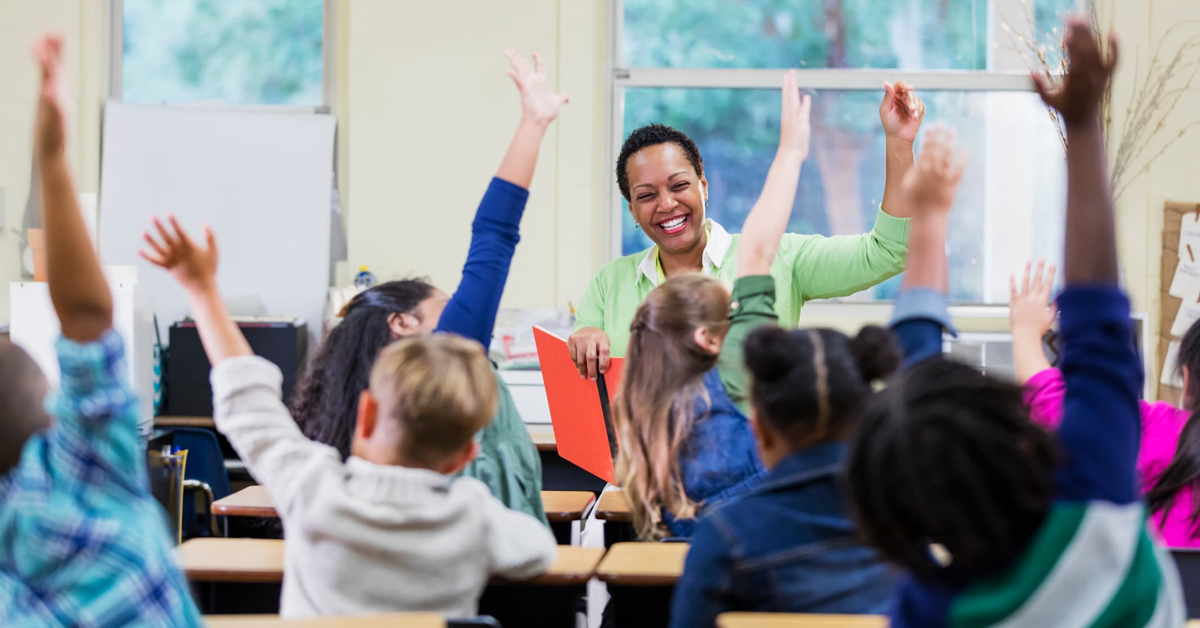
Effective Instruction Made Easy
Access rigorous, relevant, and adaptable math lesson plans for free
Adding and Subtracting to Solve Problems
7.1: Positive or Negative? (5 minutes)
CCSS Standards
Building On
Building Towards
Routines and Materials
Instructional Routines
- Think Pair Share
The purpose of this warm-up is to have students reason about an equation involving positive and negative rational numbers using what they have learned about operations with rational numbers.
Arrange students in groups of 2. Give students 30 seconds of quiet think time and ask them to give a signal when they have an answer and a strategy for the first question. Then have them discuss their reasoning with a partner. Ask for an explanation, and then ask if everyone agrees with that reasoning.
Then give students 30 seconds of quiet think time and ask them to give a signal when they have an answer for the second question. Then have them discuss their reasoning with a partner.
Student Facing
Without computing:
- Is the solution to \(\text-2.7 + x = \text- 3.5\) positive or negative?
Select all the expressions that are solutions to \(\text-2.7 + x = \text- 3.5\) .
- \(\text-3.5 + 2.7\)
- \(3.5 - 2.7\)
- \(\text-3.5 - (\text-2.7)\)
- \(\text-3.5 - 2.7\)
Student Response
Teachers with a valid work email address can click here to register or sign in for free access to Student Response.
Activity Synthesis
Ask several student to share which expressions they chose for the second question. Discuss until everyone is in agreement about the answer to the second question.
7.2: Phone Inventory (10 minutes)
- MLR8: Discussion Supports
Positive and negative numbers are often used to represent changes in a quantity. An increase in the quantity is positive, and a decrease in the quantity is negative. In this activity, students see an example of this convention and are asked to make sense of it in the given context.
Arrange students in groups of 2. Give students 30 seconds of quiet work time followed by 1 minute of partner discussion for the first two problems. Briefly, ensure everyone agrees on the interpretation of positive and negative numbers in this context, and then invite students to finish the rest of the questions individually. Follow with whole-class discussion.
A store tracks the number of cell phones it has in stock and how many phones it sells.
The table shows the inventory for one phone model at the beginning of each day last week. The inventory changes when they sell phones or get shipments of phones into the store.
- What do you think it means when the change is positive? Negative?
- What do you think it means when the inventory is positive? Negative?
- Based on the information in the table, what do you think the inventory will be at on Saturday morning? Explain your reasoning.
- What is the difference between the greatest inventory and the least inventory?
Tell students that we often use positive and negative to represent changes in a quantity. Typically, an increase in the quantity is positive, and a decrease in the quantity is negative.
Ask students what they answered for the second question and record their responses. Highlight one or two that describe the situation clearly.
Ask a few students to share their answer to the third question, and discuss any differences. Then discuss the answer to the last question.
7.3: Solar Power (15 minutes)
- Anticipate, Monitor, Select, Sequence, Connect
- MLR6: Three Reads
It is common to use positive numbers to represent credit and negative numbers to represent debts on a bill. This task introduces students to this convention and asks them to solve addition and subtraction questions in that context. Note that whether a number should be positive or negative is often a choice, which means one must be very clear about explaining the interpretation of a signed number in a particular context (MP6).
For the second question, monitor for students who find the amount each week and sum those, and students who sum the value of the electricity used and the value of the electricity generated separately, and then find the sum of those.
Arrange students in groups of 2. Give students 4 minutes of quiet work time followed by partner discussion. Follow with a whole-class discussion.
Han's family got a solar panel. Each month they get a credit to their account for the electricity that is generated by the solar panel. The credit they receive varies based on how sunny it is.

Attribution: Solar panels on a roof, by Pujanak (Own work). Public Domain. Wikimedia Commons. Source .
Here is their electricity bill from January.
In January they used $ 83.56 worth of electricity and generated $ 6.75 worth of electricity.
- In July they were traveling away from home and only used $ 19.24 worth of electricity. Their solar panel generated $ 22.75 worth of electricity. What was their amount due in July?
The table shows the value of the electricity they used and the value of the electricity they generated each week for a month. What amount is due for this month?
- What is the difference between the value of the electricity generated in week 1 and week 2? Between week 2 and week 3?
Are you ready for more?
While most rooms in any building are all at the same level of air pressure, hospitals make use of "positive pressure rooms" and "negative pressure rooms." What do you think it means to have negative pressure in this setting? What could be some uses of these rooms?
Teachers with a valid work email address can click here to register or sign in for free access to Extension Student Response.
Ask one or more students to share their answer to the first question and resolve any discrepancies.
Ask selected students to share their reasoning for the second questions. Discuss the relative merits of different approaches to solving the problem.
Finish by going over the solution to the third question. Point out that the bill will reflect a negative number in the amount due section, but we can interpret this to mean that the family receives a credit, and it will be applied to their next bill.
7.4: Differences and Distances (15 minutes)
Optional activity.
In grade 6, students practiced finding the horizontal or vertical distance between points on a coordinate plane. In this activity, students see that this can be done by subtracting the \(x\) or \(y\) -coordinates for the points (MP7). Students continue to work with the distinction between distance (which is unsigned) and difference (which is signed) (MP6). This prepares them finding the slope of a line and the diagonal distance between points in grade 8.
Arrange students in groups of 2. Give students 3 minutes of quiet work time followed by partner discussion. Follow with a whole-class discussion.
Plot these points on the coordinate grid: \(A= (5, 4), B= (5, \text-2), C= (\text-3, \text-2), D= (\text-3, 4)\)
- What shape is made if you connect the dots in order?
- What are the side lengths of figure \(ABCD\) ?
- What is the difference between the \(x\) -coordinates of \(B\) and \(C\) ?
- What is the difference between the \(x\) -coordinates of \(C\) and \(B\) ?
How do the differences of the coordinates relate to the distances between the points?
Plot these points on the coordinate grid: \(A= (5, 4), B= (5, \text-2), C= (\text-3, \text-2), D= (\text-3, 4)\)

Main learning points:
When two points in the coordinate plane lie on a horizontal line, you can find the distance between them by subtracting their \(x\) -coordinates.
When two points in the coordinate plane lie on a vertical line, you can find the distance between them by subtracting their \(y\) -coordinates.
- The distance between two numbers is independent of the order, but the difference depends on the order.
Discussion questions:
- Explain what makes the distance between two points and the difference between two points distinct.
- Explain how you would find the vertical or horizontal distance between two points.
- Explain how you would find the vertical or horizontal difference between two points.
Lesson Synthesis
What are some situations where adding and subtracting rational numbers can help us solve problems?
7.5: Cool-down - Coffee Shop Cups (5 minutes)
Teachers with a valid work email address can click here to register or sign in for free access to Cool-Downs.
Student Lesson Summary
Sometimes we use positive and negative numbers to represent quantities in context. Here are some contexts we have studied that can be represented with positive and negative numbers:
- temperature
- an account balance
- electricity flowing in and flowing out
In these situations, using positive and negative numbers, and operations on positive and negative numbers, helps us understand and analyze them. To solve problems in these situations, we just have to understand what it means when the quantity is positive, when it is negative, and what it means to add and subtract them.

Description: <p>Five line segments on a coordinate plane with the origin labeled “O”. The numbers negative 5 through 5, are indicated on the horizontal axis and the numbers negative 4 through 5 are indicated on the vertical axis. Each line segment is either vertical or horizontal. The first line segment is vertical that begins at the point negative 5 comma 3 and ends at the point negative 5 comma negative 4; the line segment is labeled with the expression 3 minus negative 4. The second line segment is horizontal and begins at the point negative 5 comma negative 4 and ends at the point negative 2 comma negative 4; the line segment is labeled with the expression negative 2 minus negative 5. The third line segment is vertical and begins at the point negative 2 comma negative 4 and ends at the point negative 2 comma 2; the line segment is labeled with the expression 2 minus negative 4. The fourth line segment is horizontal and begins at the point negative 2 comma 2 and ends at the point three comma 2; the line segment is labeled with the expression 3 minus negative 2. The fifth line segment is vertical and begins at the point 3 comma 2 and ends at the point 3 comma five; the line segment is labeled with the expression 5 minus 2.</p>
Remember: the distance between two numbers is independent of the order, but the difference depends on the order.
Video Summary
FREE K-12 standards-aligned STEM
curriculum for educators everywhere!
Find more at TeachEngineering.org .
- TeachEngineering
- Problem Solving
Lesson Problem Solving
Grade Level: 8 (6-8)
(two 40-minute class periods)
Lesson Dependency: The Energy Problem
Subject Areas: Physical Science, Science and Technology

- Print lesson and its associated curriculum
Curriculum in this Unit Units serve as guides to a particular content or subject area. Nested under units are lessons (in purple) and hands-on activities (in blue). Note that not all lessons and activities will exist under a unit, and instead may exist as "standalone" curriculum.
- Energy Forms and States Demonstrations
- Energy Conversions
- Watt Meters to Measure Energy Consumption
- Household Energy Audit
- Light vs. Heat Bulbs
- Efficiency of an Electromechanical System
- Efficiency of a Water Heating System
- Solving Energy Problems
- Energy Projects
TE Newsletter
Engineering connection, learning objectives, worksheets and attachments, more curriculum like this, introduction/motivation, associated activities, user comments & tips.

Scientists, engineers and ordinary people use problem solving each day to work out solutions to various problems. Using a systematic and iterative procedure to solve a problem is efficient and provides a logical flow of knowledge and progress.
- Students demonstrate an understanding of the Technological Method of Problem Solving.
- Students are able to apply the Technological Method of Problem Solving to a real-life problem.

Educational Standards Each TeachEngineering lesson or activity is correlated to one or more K-12 science, technology, engineering or math (STEM) educational standards. All 100,000+ K-12 STEM standards covered in TeachEngineering are collected, maintained and packaged by the Achievement Standards Network (ASN) , a project of D2L (www.achievementstandards.org). In the ASN, standards are hierarchically structured: first by source; e.g. , by state; within source by type; e.g. , science or mathematics; within type by subtype, then by grade, etc .
Ngss: next generation science standards - science.
View aligned curriculum
Do you agree with this alignment? Thanks for your feedback!
International Technology and Engineering Educators Association - Technology
State standards, national science education standards - science.
Scientists, engineers, and ordinary people use problem solving each day to work out solutions to various problems. Using a systematic and iterative procedure to solve a problem is efficient and provides a logical flow of knowledge and progress.
In this unit, we use what is called "The Technological Method of Problem Solving." This is a seven-step procedure that is highly iterative—you may go back and forth among the listed steps, and may not always follow them in order. Remember that in most engineering projects, more than one good answer exists. The goal is to get to the best solution for a given problem. Following the lesson conduct the associated activities Egg Drop and Solving Energy Problems for students to employ problem solving methods and techniques.
Lesson Background and Concepts for Teachers
The overall concept that is important in this lesson is: Using a standard method or procedure to solve problems makes the process easier and more effective.
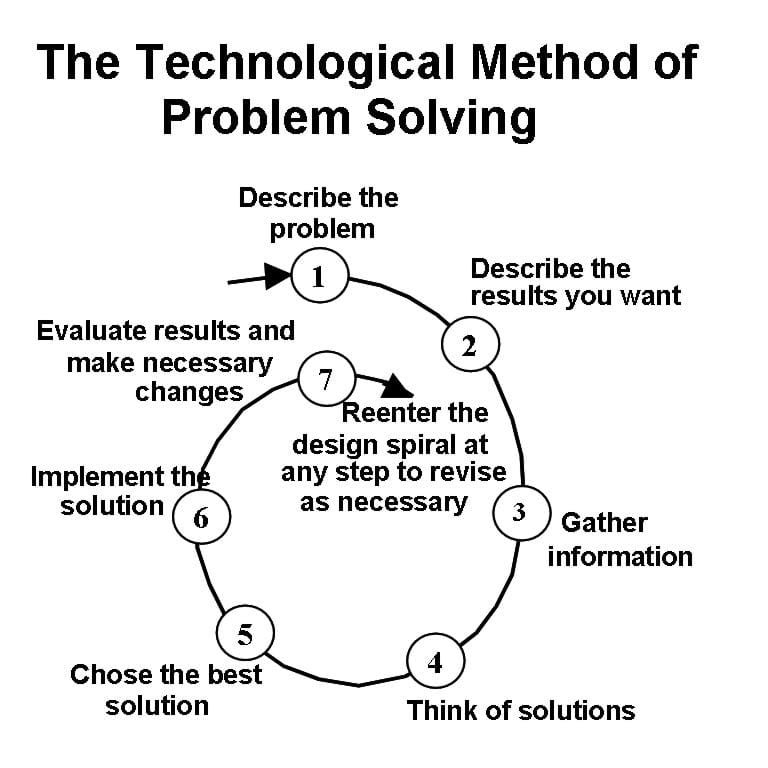
The specific process of problem solving used in this unit was adapted from an eighth-grade technology textbook written for New York State standard technology curriculum. The process is shown in Figure 1, with details included below. The spiral shape shows that this is an iterative, not linear, process. The process can skip ahead (for example, build a model early in the process to test a proof of concept) and go backwards (learn more about the problem or potential solutions if early ideas do not work well).
This process provides a reference that can be reiterated throughout the unit as students learn new material or ideas that are relevant to the completion of their unit projects.
Brainstorming about what we know about a problem or project and what we need to find out to move forward in a project is often a good starting point when faced with a new problem. This type of questioning provides a basis and relevance that is useful in other energy science and technology units. In this unit, the general problem that is addressed is the fact that Americans use a lot of energy, with the consequences that we have a dwindling supply of fossil fuels, and we are emitting a lot of carbon dioxide and other air pollutants. The specific project that students are assigned to address is an aspect of this problem that requires them to identify an action they can take in their own live to reduce their overall energy (or fossil fuel) consumption.
The Seven Steps of Problem Solving
1. Identify the problem
Clearly state the problem. (Short, sweet and to the point. This is the "big picture" problem, not the specific project you have been assigned.)
2. Establish what you want to achieve
- Completion of a specific project that will help to solve the overall problem.
- In one sentence answer the following question: How will I know I've completed this project?
- List criteria and constraints: Criteria are things you want the solution to have. Constraints are limitations, sometimes called specifications, or restrictions that should be part of the solution. They could be the type of materials, the size or weight the solution must meet, the specific tools or machines you have available, time you have to complete the task and cost of construction or materials.
3. Gather information and research
- Research is sometimes needed both to better understand the problem itself as well as possible solutions.
- Don't reinvent the wheel – looking at other solutions can lead to better solutions.
- Use past experiences.
4. Brainstorm possible solutions
List and/or sketch (as appropriate) as many solutions as you can think of.
5. Choose the best solution
Evaluate solution by: 1) Comparing possible solution against constraints and criteria 2) Making trade-offs to identify "best."
6. Implement the solution
- Develop plans that include (as required): drawings with measurements, details of construction, construction procedure.
- Define tasks and resources necessary for implementation.
- Implement actual plan as appropriate for your particular project.
7. Test and evaluate the solution
- Compare the solution against the criteria and constraints.
- Define how you might modify the solution for different or better results.
- Egg Drop - Use this demonstration or activity to introduce and use the problem solving method. Encourages creative design.
- Solving Energy Problems - Unit project is assigned and students begin with problem solving techniques to begin to address project. Mostly they learn that they do not know enough yet to solve the problem.
- Energy Projects - Students use what they learned about energy systems to create a project related to identifying and carrying out a personal change to reduce energy consumption.
The results of the problem solving activity provide a basis for the entire semester project. Collect and review the worksheets to make sure that students are started on the right track.

Learn the basics of the analysis of forces engineers perform at the truss joints to calculate the strength of a truss bridge known as the “method of joints.” Find the tensions and compressions to solve systems of linear equations where the size depends on the number of elements and nodes in the trus...

Through role playing and problem solving, this lesson sets the stage for a friendly competition between groups to design and build a shielding device to protect humans traveling in space. The instructor asks students—how might we design radiation shielding for space travel?
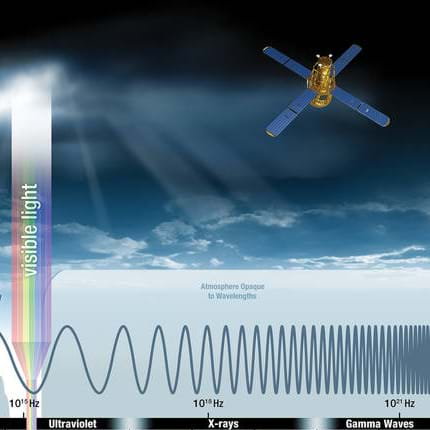
A process for technical problem solving is introduced and applied to a fun demonstration. Given the success with the demo, the iterative nature of the process can be illustrated.

The culminating energy project is introduced and the technical problem solving process is applied to get students started on the project. By the end of the class, students should have a good perspective on what they have already learned and what they still need to learn to complete the project.

Hacker, M, Barden B., Living with Technology , 2nd edition. Albany NY: Delmar Publishers, 1993.
Other Related Information
This lesson was originally published by the Clarkson University K-12 Project Based Learning Partnership Program and may be accessed at http://internal.clarkson.edu/highschool/k12/project/energysystems.html.
Contributors
Supporting program, acknowledgements.
This lesson was developed under National Science Foundation grants no. DUE 0428127 and DGE 0338216. However, these contents do not necessarily represent the policies of the National Science Foundation, and you should not assume endorsement by the federal government.
Last modified: August 16, 2023

- For HR & Businesses
- For K-12 Educators
- For Universities & Colleges
- For Tourism
- For Events & Conferences
- For Non-Profits
- For Experience Facilitators
- Lessons from the Chase
- Reviews from Participants
- Company Updates
- Goosechase in the News
- Go to Goosechase.com
Lesson Title: An Interactive Review of Intermediate Math Concepts
Wondering how to make your high school math classes more engaging and effective?
In this math lesson plan, math students in grades 7-10 will have fun while they review key concepts learned throughout the semester. Students will engage in a dynamic scavenger hunt that combines technology with collaborative learning. This interactive activity will challenge students to apply their mathematical knowledge in a variety of contexts, while working individually or in teams. Watch as your students deepen their understanding of math concepts through problem-solving and critical thinking!
Grade: 7 - 10
Subject: Math, Algebra, Physics
- Students will review and demonstrate their understanding of key math concepts taught throughout the semester using an interactive Goosechase Scavenger Hunt.
- Smartphones or tablets with Goosechase app installed
- Access to the internet
- Writing notebooks or digital devices for problem solving
- Pens or pencils
Preparation:
- Create an Experience on the Goosechase app with a series of Math Missions.
- Find example Missions in the Goosechase Templates below.
- Run your Experience during one class period or for the entire week.
- Photo Mission: “Find an object in your surroundings that represents a geometric shape (e.g., a cylinder, sphere, or rectangle). Take a photo of the object and label the shape.”
- Video Mission: "Record a short video explaining the probability of flipping a coin and getting heads. Include an example in your explanation.”
- Text Mission: " Research a famous mathematician and write a short paragraph about their contributions to math.”
- Adapt the difficulty of the Missions based on the proficiency levels of your students to keep the activity inclusive and engaging for everyone.
- Prepare hints or resources that might help students solve the Missions if needed.
- Divide students into teams and assign each team a mobile device with the app, or have students complete the scavenger hunt individually.
- Dedicate time to ensuring all students have the Goosechase app downloaded and joined to the Experience to avoid any tech issues.
Lesson Plan Outline:
- Begin by explaining the objectives of the lesson
- Review some of the skills you have taught throughout the writing unit
- Briefly demonstrate how to use the Goosechase app.
- Go over the rules and expectations for the scavenger hunt, including safety guidelines and respect for school property.
- Read through Missions with students, emphasizing the importance of evidence and analysis in their responses.
- Monitor team progress and provide assistance as necessary.
- If working in teams, encourage them to strategize and collaborate to solve the Missions.
- Gather students to discuss their experiences.
- Review some of the key challenges and correct any misunderstandings.
- Announce the winning team (optional) and celebrate all participants.
- Allow each team to share one challenge they found particularly interesting or difficult.
Optional Post-Experience Activities:
- Assign further review questions for students to complete
- Assign a reflection essay where students describe what they learned and how they felt about using the scavenger hunt for review.
- Observe student participation and engagement during the scavenger hunt.
- Review the correctness of the answers submitted through Goosechase.
Ready Made Experience Templates to Try
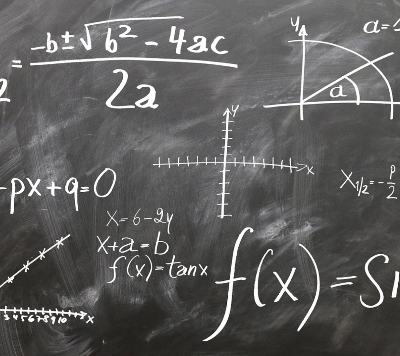
Physics on the Playground
Use this game to complete missions on the playground by using the physics concepts we learned!
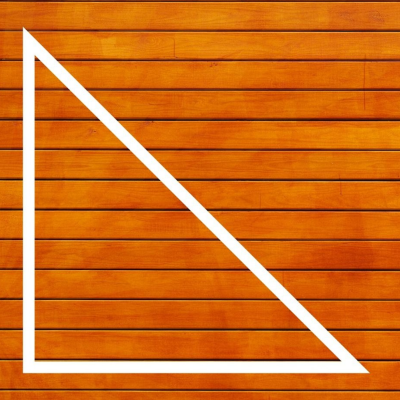
What's your Angle?
Bringing math to life! How many of these angles and concepts can you find in your real life?
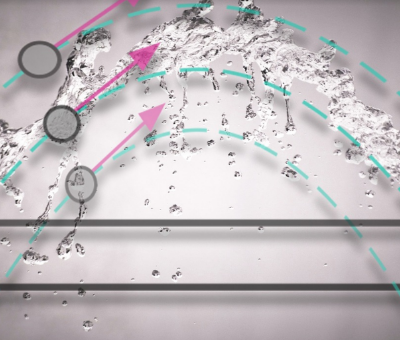
Algebra Parabolas
Complete these math Missions to review using and solving for parabolas in this algebra Experience.
Want a copy of this lesson plan to use with your class?
What is goosechase edu.
Goosechase is an online platform that helps educators create and run interactive learning experiences in their classrooms and beyond. Sign up and try creating an Experience, or contact us to learn more about our school and district-wide solutions!
- K-12 Educators
Rebecca Everson
Goosechase EDU Ambassador Program Manager & K-6 Teacher
Recommended for you

Lesson Title: Exploring US Geography through an Interactive Adventure

Texas Data Privacy and Security Act – What Does it Mean for Teachers and Educational Professionals?

Lesson Title: Writing Skills Scavenger Hunt
No results for your search, please try with something else.
- Share full article
For more audio journalism and storytelling, download New York Times Audio , a new iOS app available for news subscribers.

- June 7, 2024 • 30:00 Real Teenagers, Fake Nudes: The Rise of Deepfakes in American Schools
- June 6, 2024 • 23:38 The Fight Over the Next Pandemic
- June 5, 2024 • 30:42 Biden’s Push to End the War in Gaza
- June 4, 2024 • 29:17 A Conversation With President Zelensky
- June 3, 2024 • 32:07 How Trump’s Conviction Could Reshape the Election
- May 31, 2024 • 31:29 Guilty
- May 30, 2024 • 25:21 The Government Takes On Ticketmaster
- May 29, 2024 • 29:46 The Closing Arguments in the Trump Trial
- May 28, 2024 • 25:56 The Alitos and Their Flags
- May 24, 2024 • 25:18 Whales Have an Alphabet
- May 23, 2024 • 34:24 I.C.C. Prosecutor Requests Warrants for Israeli and Hamas Leaders
- May 22, 2024 • 23:20 Biden’s Open War on Hidden Fees
How Trump’s Conviction Could Reshape the Election
The guilty verdict in his manhattan criminal trial is set to become a key piece in the 2024 campaign..
Hosted by Michael Barbaro
Featuring Maggie Haberman and Reid J. Epstein
Produced by Rachel Quester , Asthaa Chaturvedi , Mooj Zadie and Diana Nguyen
Edited by Devon Taylor
Original music by Marion Lozano , Elisheba Ittoop and Pat McCusker
Engineered by Chris Wood
Listen and follow The Daily Apple Podcasts | Spotify | Amazon Music | YouTube
Last week, Donald J. Trump became the first U.S. former president to be convicted of a crime when a jury found that he had falsified business records to conceal a sex scandal.
Nate Cohn, who is the chief political analyst at The Times, Maggie Haberman, a senior political correspondent, and Reid J. Epstein, who also covers politics, discuss how the conviction might shape the remaining months of the presidential race.
On today’s episode

Nate Cohn , who is the chief political analyst for The New York Times.

Maggie Haberman , a senior political correspondent for The New York Times.

Reid J. Epstein , who covers politics for The New York Times.

Background reading
The political fallout is far from certain, but the verdict will test America’s traditions and legal institutions .
Watch a video analysis of whether this newfound moment sticks politically.
Democrats are pushing President Biden to make Mr. Trump’s felonies a top 2024 issue .
There are a lot of ways to listen to The Daily. Here’s how.
We aim to make transcripts available the next workday after an episode’s publication. You can find them at the top of the page.
The Daily is made by Rachel Quester, Lynsea Garrison, Clare Toeniskoetter, Paige Cowett, Michael Simon Johnson, Brad Fisher, Chris Wood, Jessica Cheung, Stella Tan, Alexandra Leigh Young, Lisa Chow, Eric Krupke, Marc Georges, Luke Vander Ploeg, M.J. Davis Lin, Dan Powell, Sydney Harper, Mike Benoist, Liz O. Baylen, Asthaa Chaturvedi, Rachelle Bonja, Diana Nguyen, Marion Lozano, Corey Schreppel, Rob Szypko, Elisheba Ittoop, Mooj Zadie, Patricia Willens, Rowan Niemisto, Jody Becker, Rikki Novetsky, John Ketchum, Nina Feldman, Will Reid, Carlos Prieto, Ben Calhoun, Susan Lee, Lexie Diao, Mary Wilson, Alex Stern, Sophia Lanman, Shannon Lin, Diane Wong, Devon Taylor, Alyssa Moxley, Summer Thomad, Olivia Natt, Daniel Ramirez and Brendan Klinkenberg.
Our theme music is by Jim Brunberg and Ben Landsverk of Wonderly. Special thanks to Sam Dolnick, Paula Szuchman, Lisa Tobin, Larissa Anderson, Julia Simon, Sofia Milan, Mahima Chablani, Elizabeth Davis-Moorer, Jeffrey Miranda, Renan Borelli, Maddy Masiello, Isabella Anderson, Nina Lassam and Nick Pitman.
Maggie Haberman is a senior political correspondent reporting on the 2024 presidential campaign, down ballot races across the country and the investigations into former President Donald J. Trump. More about Maggie Haberman
Reid J. Epstein covers campaigns and elections from Washington. Before joining The Times in 2019, he worked at The Wall Street Journal, Politico, Newsday and The Milwaukee Journal Sentinel. More about Reid J. Epstein
Advertisement
If you're seeing this message, it means we're having trouble loading external resources on our website.
If you're behind a web filter, please make sure that the domains *.kastatic.org and *.kasandbox.org are unblocked.
To log in and use all the features of Khan Academy, please enable JavaScript in your browser.
New content!
Review articles, unit 1: proportional relationships, unit 2: rates and percentages, unit 3: integers: addition and subtraction, unit 4: rational numbers: addition and subtraction, unit 5: negative numbers: multiplication and division, unit 6: expressions, equations, & inequalities, unit 7: statistics and probability, unit 8: scale copies, unit 9: geometry.

IMAGES
VIDEO
COMMENTS
Thin k. The problem-solving strategy involves students being challenged to collaborative solve real-world math problems that they have not yet previously encountered. It student-centered and ...
One-step inequalities. Solve for x . Your answer must be simplified. Learn for free about math, art, computer programming, economics, physics, chemistry, biology, medicine, finance, history, and more. Khan Academy is a nonprofit with the mission of providing a free, world-class education for anyone, anywhere.
7.EE.B.3 — Solve multi-step real-life and mathematical problems posed with positive and negative rational numbers in any form (whole numbers, fractions, and decimals), using tools strategically. Apply properties of operations to calculate with numbers in any form; convert between forms as appropriate; and assess the reasonableness of answers using mental computation and estimation strategies.
Plotting inequalities on a number line. Testing solutions to inequalities. One-step inequalities examples. One-step inequalities: -5c ≤ 15. One-step inequality word problem. One-step inequalities review.
an equation that can be used to solve the word problem. Related Topics: More Lesson Plans for Grade 7 Common Core Math Lesson Notes Students are asked to substitute a number for the variable to check whether it is a solution to the equation. This lesson focuses on students building an equation that can be used to solve a word problem. The ...
Unit 7: Angles, triangles, and prisms. 0/1200 Mastery points. Lesson 1: Relationships of angles Lesson 2: Adjacent angles Lesson 3: Nonadjacent angles Lesson 5: Using equations to solve for unknown angles. Lesson 7: Building polygons (part 2) Lesson 10: Drawing triangles (part 2) Lesson 11: Slicing solids Lesson 12: Volume of right prisms ...
Lesson 7 Reasoning about Solving Equations (Part 1) Lesson 8 Reasoning about Solving Equations (Part 2) Lesson 9 Dealing with Negative Numbers. Lesson 10 Different Options for Solving One Equation. Lesson 11 Using Equations to Solve Problems. Lesson 12 Solving Problems about Percent Increase or Decrease. Lesson 13 Reintroducing Inequalities ...
Lessons 6 and 7 focus on the relationship between a circle's circumference and its diameter. In Lesson 7, students solve real-world and mathematical problems involving circumference, including problems involving semi-circles.
most of the bridging lessons try at least a few problem-solving lessons. Some of the Problem Banks include more problems than students can complete in one period. You might wish to use these as extension problems, or have students complete them as problems of the day throughout the year. Grade 7 Problem-Solving Lessons Introduction US 7.1 PS7-1 ...
Lesson 7. Adding and Subtracting to Solve Problems. Preparation Lesson Practice. View Student Lesson. 7.1: Positive or Negative? (5 minutes) CCSS Standards. Building On. 7.NS.A.1; ... This helps students connect the language in the word problem and the reasoning needed to solve the problem, while still keeping the intended level of cognitive ...
Lesson Objective: Interpret the unknown in multiplication and division to model and solve problems using units of 6 and 7. The Student Debrief is intended to invite reflection and
Lesson 7 Problem Solving: Make an Organized List Homework Helper Harold, Nina, Adam, and Rachel sit at the same table. Students must go to the drinking fountain in groups of 3. What possible combinations of these students can go to the drinking fountain together? Understand What facts do you know? Harold, Nina, Adam, and Rachel sit together.
Now, with expert-verified solutions from Ready Mathematics: Practice and Problem Solving Grade 7 , you'll learn how to solve your toughest homework problems. Our resource for Ready Mathematics: Practice and Problem Solving Grade 7 includes answers to chapter exercises, as well as detailed information to walk you through the process step by ...
Accurately identify what caused the problem and identify solution strategies.
Lesson 7. Problem Solving. Objective. Plan a lesson that uses problem-solving strategy. Introduction. Not all word problems promote problem-solving skills. In this lesson, you will learn the characteristics of a good word problem, when it is best to give a word problem, and how to process students' varied solutions.
Chapter 6, Lesson 7: Problem-Solving Investigation: Draw a Diagram. Extra Examples. Group Activity Cards. Personal Tutor. Self-Check Quizzes.
This rule holds for all fractional multiplication and division. The rule is when you turn the fraction upside down the you also switch divide/multiply and it's the same thing. The same hold true when you convert the fractions into decimals. 1/2 = 0.5 and it's inverse 2/1 = 2. This means dividing by 0.5 is the same as multiplying by 2.
Lesson 7 - Problem Solving Strategies.pdf - Free download as PDF File (.pdf), Text File (.txt) or read online for free. This document discusses Polya's four-step problem solving strategy: 1) understand the problem, 2) devise a plan, 3) carry out the plan, and 4) review the solution. It also lists common problem solving techniques like guessing and checking, solving similar simpler problems ...
Study with Quizlet and memorize flashcards containing terms like 1. Finding common elements in different situations 2. Using general rules to solve individual problems 3. Making an educated guess based on current information, 1. Estimating the length of a room without a yardstick 2. Updating a computer with new software 3. Explaining the reason why a new medical treatment works, Wanda ...
1. Identify the problem. Clearly state the problem. (Short, sweet and to the point. This is the "big picture" problem, not the specific project you have been assigned.) 2. Establish what you want to achieve. Completion of a specific project that will help to solve the overall problem.
Psychology Lesson 7 & 8 (unit 3 test) 60 terms. zedeese. Preview. Stress & Health - U4L1 Psych B. Teacher 10 terms. mallen_scca. Preview. Sensation and Perception (Unit 3) Teacher 63 terms. ... A problem solving strategy guaranteed to produce a solution even if the user does not know how it works.
This interactive activity will challenge students to apply their mathematical knowledge in a variety of contexts, while working individually or in teams. Watch as your students deepen their understanding of math concepts through problem-solving and critical thinking! Grade: 7 - 10. Subject: Math, Algebra, Physics. Objective:
Lesson 7: Problem Solving Choices Open Google Slides Edit This Activity Sheet. Using Google Slides, you can customize every Overcoming Obstacles activity sheet in the Elementary, Middle, and High School levels. Click on the button below to open a link to the Google Slides version of this activity sheet. In order to begin editing the file, you ...
Last week, Donald J. Trump became the first U.S. former president to be convicted of a crime when a jury found that he had falsified business records to conceal a sex scandal. Nate Cohn, who is ...
7th grade. Test your knowledge of the skills in this course. Start Course challenge. Check out our expanded Common Core standards coverage for operations with negative numbers. Your mastery percentages may have changed, but you have kept your progress in the exercises where you've already worked.